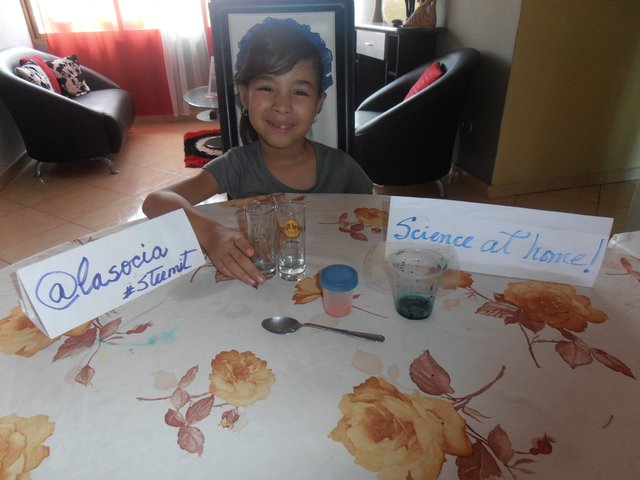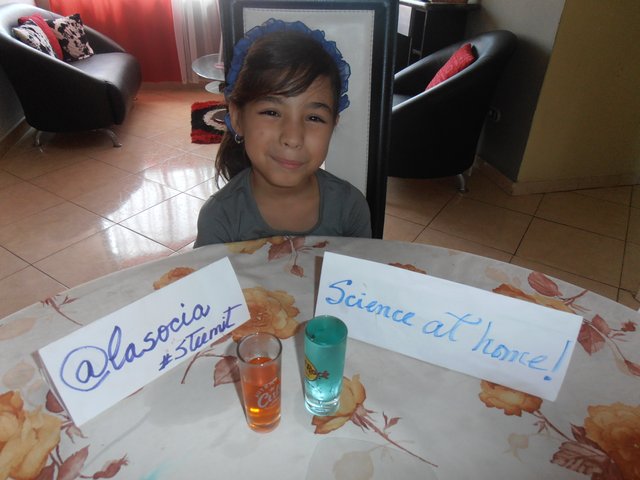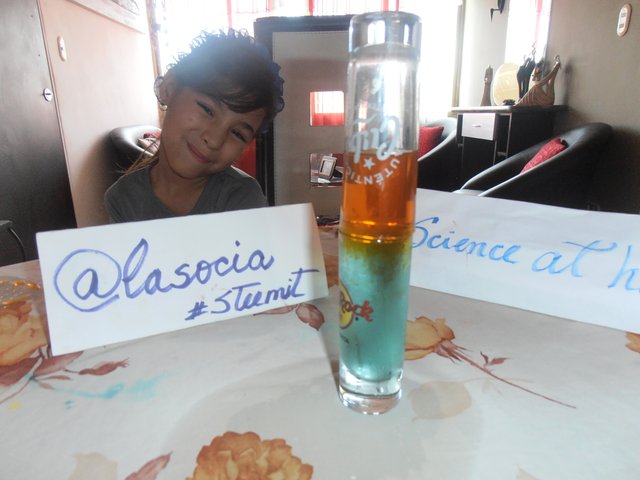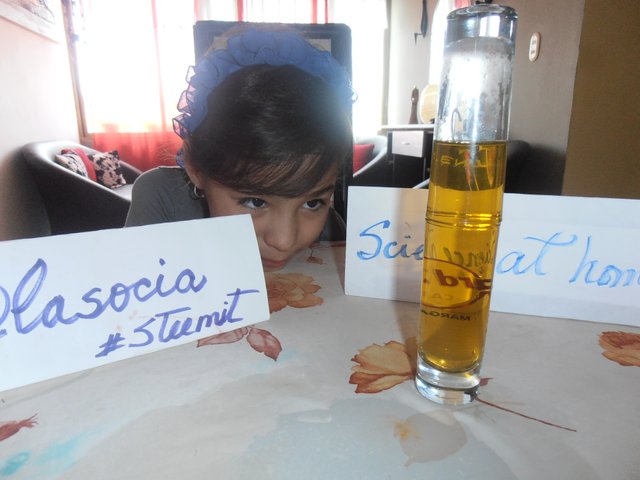Science at home! Fun homemade experiments for the little ones. We will learn about Density, Temperature and Buoyancy!
But before starting with the fun, it is important that we learn about some terms that we will study in our experiments:
What is Density?
That an object floats or sinks in a liquid depends on the relation between the densities of the object and the liquid. The density of a substance is obtained by dividing its mass by its volume. Volume is the space it occupies and mass is easily measured with a weight or scale. If we divide the mass between the volume density is obtained.
What is the temperature?
Temperature is a quantity that measures the thermal level or the heat that a body possesses. Every substance in a certain state of aggregation (solid, liquid or gas), is made up of molecules that are in continuous movement. The sum of the energies of all the molecules of the body is known as thermal energy; and temperature is the measure of that average energy.
What is buoyancy?
Buoyancy is the ability of a body to stay within a fluid. A simple way to explain it is that for an object to float it is necessary that the push-up is greater than the weight and that depending on the density of the object and the fluid it floats more or less.
Now if the fun begins, we go with the Experiments:
Experiment on Density, temperature and buoyancy with hot and cold water.
In previous experiments we have seen that water can float in other liquids, but can water float in water? Go ahead and investigate it, have fun and discover lots of things about buoyancy and density.
Materials:
- Two equal vessels.
- Hot water.
- Cold water with ice cubes.
- A plastic sheet (or plasticized cardboard like that of a milk or juice container) of sufficient size to cover the mouth of the cups.
- Food coloring and spoons to mix.
- A place where it does not matter if water is spilled, or a container (tub or tray) to contain possible spills.
Procedure for experiment 1:
Prepare a glass with very cold water (ice cubes) and put a stream of dye. Mix with the spoon. We use blue color for cold water and orange for hot water.
Remove the ice and fill with water until it overflows. If the glass is not completely full, the experiment will not work.
Also put coloring in the glass of hot water (orange in our case). To prevent accidents, make sure the water does not burn.
Cover the glass of hot water with the plastic sheet.
Holding the glass with one hand and the sheet with the palm of the other hand, put the glass upside down.
Remove the hand that holds the blade.
As if by magic, the sheet will remain in place and the water will remain inside the inverted glass.
A while ago we could verify that it has nothing to do with magic but with the pressure of the air and the superficial tension of the water.
Place the glass of hot water (and the plastic sheet) on the glass of cold water, face down, so that they are well aligned.
Remove the plastic sheet by sliding it slowly. What will happen?
- Observe and draw conclusions.
Procedure for experiment 2:
- The steps to follow are similar to those in experiment 1, with the exception that now we will put the glass with hot water down and the one with cold water on top.
- The glass that goes under, in this case the one of hot water, must be full to overflowing.
- Does the same thing happen in the previous experiment?
What happen?
Next, we will analyze what happened with our water glasses:
Experiment 1. The fact that hot water does not mix with cold water indicates that hot water floats in the cold. For this to happen, hot water must be less dense than cold water.
Experiment 2. The colors have mixed quickly. That means that the cold water has sunk into the hot water. The reason? The cold water has to be denser.
According to the results, the density of water varies with temperature. Why? To answer this question, suppose we have a glass of cold water. Its molecules have little energy, move little, slowly and do not get very far. They stay together. Now we heat the water. Its molecules have more energy, which allows them to move a lot, quickly and travel greater distances. The molecules are no longer so close to one another.
So, for the same mass of water, cold water occupies less volume (its molecules are close together) than hot water (its molecules are more separated). Remembering that the density is calculated by dividing the mass by volume, we obtain that the density of the hot water is lower than that of the cold water.






Congratulations! Your post has been selected as a daily Steemit truffle! It is listed on rank 9 of all contributions awarded today. You can find the TOP DAILY TRUFFLE PICKS HERE.
I upvoted your contribution because to my mind your post is at least 14 SBD worth and should receive 115 votes. It's now up to the lovely Steemit community to make this come true.
I am
TrufflePig, an Artificial Intelligence Bot that helps minnows and content curators using Machine Learning. If you are curious how I select content, you can find an explanation here!Have a nice day and sincerely yours,

TrufflePigIf you would like to support the educational community by delegating to @steemiteducation, please click on any of the following links. This will ensure that more teachers are supported on a daily basis.
100SP 200SP 300SP 400SP 500SP 750SP 1000SP 2000SP 3000SP 4000SP 5000SP 10,000SP 25,000SP